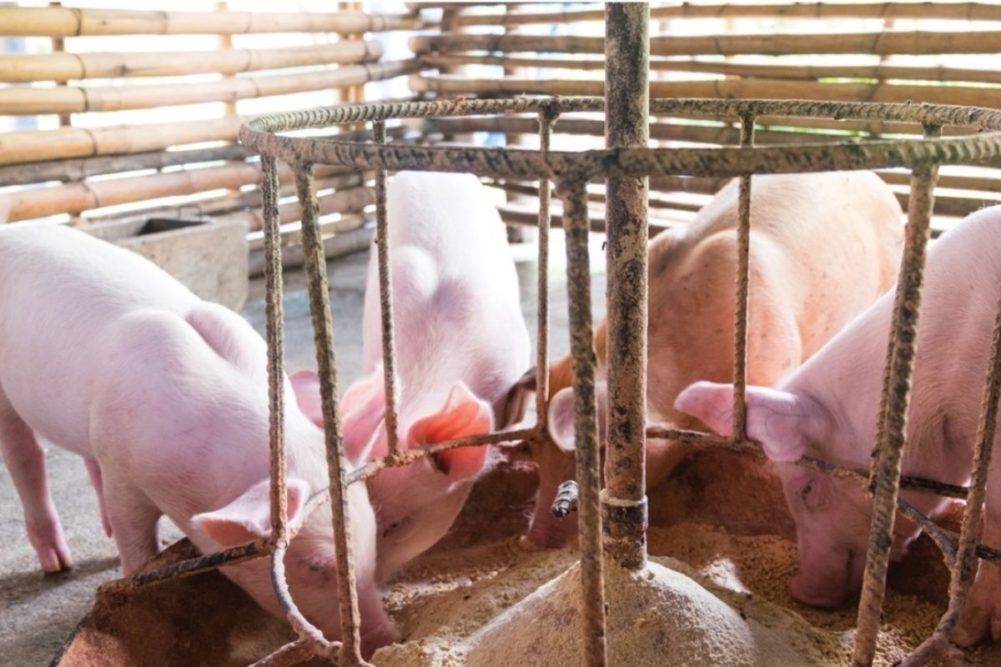KANSAS CITY, MISSIOURI, US — The global spread of African swine fever (ASF) virus has led to concerns that this virus could be carried into new regions via feed ingredients, with soy products falling under the most scrutiny. Soy is a particular concern because of evidence that it harbors infectious virus longer than other feed ingredients.
To properly evaluate the potential risks posed by soy or other ingredients, it is important to understand the system and procedures currently being used to ship products Therefore, the aim of this article was to compile several commonly asked questions about importation of soy into the United States and provide a brief description of best practices for feed ingredient imports as an example of initial steps in assessing feed ingredient risk of viral transmission.
In what form is soy shipped into the United States?
Imported soy products with the intent to be used in feed primarily are shipped into the United States as oilcake, organic soybeans or soy oil. These products were determined using the Harmonized Tariff System codes in the US International Trade Commission database.
The shipper declares these codes and, therefore, may have some variation of the actual product (example: the byproduct of oil extraction may be declared as oilcake or soy flour and meal). This declaration depends on the properties of the product as well as tariffs on particular product types.
What are the most common ports of origin/loading of oilcake, organic soybeans, or soy oil?
This information is not clearly defined. Shipping information can be found for shipments by HTS code, but they must be collected one by one. For example, only two shipments of organic soybeans in 2020 were identified and were loaded in Jawaharlal Nehru, India. However, it is important to consider both the country of origin for a product and the country of loading because one may be FAD-free while the other is positive.
It is not uncommon for soy products to be shipped overland until reaching a port to be loaded for transport overseas. For example, soybean meal from Romania may be transported to Antwerp, Belgium, before being loaded onto a ship.
What processes are common or feasible in ports of origin to reduce contamination risk?
This information is not entirely clear. Depending on the port’s capacity to ship containers versus dry bulk, holding may be implemented. Other forms of mitigation are an option. However, their regulatory approval and practical applications in ports are limited.
Mitigation measures, whether holding or other, would likely require some form of phytosanitary certification to determine compliance. This would add an extra level of documentation and regulation. Ultimately, implementing risk-reduction measures in the United States would be the most reliable.
What are the most common ports of entry for soy into the United States?
Most soy products enter through Michigan, New York, Maryland, California or Louisiana. Organic soybeans were mostly imported through New Orleans, Louisiana, US, in 2020. An important factor to consider is the number of shipments into a port versus the quantity of product.
Many ports have a large number of shipments, but these shipments may be small quantities, like bags. Other ports, like New Orleans, receive relatively few shipments, but these shipments are larger and consist of containers or dry bulk product.
How long is transport from port of loading to port of entry?
There are several factors that influence transportation time. The primary factor is whether the ingredient is being shipped via container or dry bulk. Container shipping vessels travel from port to port, loading and unloading containers as appropriate (similar to a city bus route). Dry bulk shipping is a direct route from loading to destination due to the fact that an entire vessel is hired for one large shipment.
Beyond this, freight and fuel costs dictate the speed at which these vessels are traveling because they are more fuel efficient at lower speeds.
Where does most of this product go upon arrival in the United States?
This is not well understood. Brokers commonly are used for the importation of ingredients that are then distributed once the products arrive in the country. Shipping of products from the port into the interior is proprietary information between customers and the rail and barge companies. The end use of these products could be speculated based on HTS codes, but it is unclear if products like soy oilcake stay in the United States or are shipped to other countries from US ports.
Other products such as whole soybeans can be used for human consumption or can be pressed to extract the oil. This crushing leaves soybean meal that can be used for livestock feed. This versatility makes tracking these products even more complex.
Is soy being shipped via dry bulk or through containers?
Ports in the United States are designed to ship agricultural commodities out. Arrival of dry bulk commodities can be handled, but they typically need to be unloaded straight into a railcar, barge, other vessel, or into a private warehouse.
Container shipping is more common, because dry bulk shipping requires an entire vessel to be contracted by a company or a group of companies for a very large shipment.
What challenges do US ports face concerning the import of contaminated soy?
US ports were designed to export agricultural commodities and less emphasis was placed on imports. As a result, US ports do not have the capacity to hold grains once they enter the country.
If holding times are used to mitigate contamination, it is up to the importer or the end user to facilitate that and provide space for the grains to be held.






